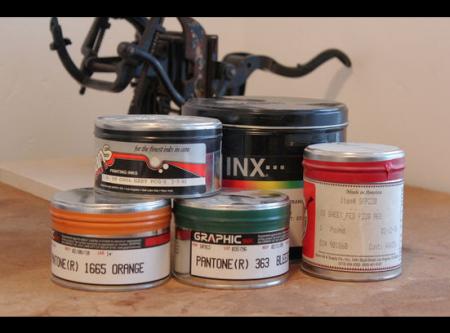

None of them informed me of their situation before they took the class. Last semester, in several courses that I taught, there were three pregnant women. While this is an old thread revived, from reading the last half dozen or so posts I would walk away from this community thinking there’s not much help for anyone who’s not a master pressmen here.Īs an addition to my last post. When someone new asks of something that seems ostensibly ludicrous to our lead stained fingertip way of thinking is it not better to assure them of their hollow apprehensions? When one asks about a more world friendly supply to use we should offer advise and experience, even at times if it means shattering long standing industry wide myths. I’d suggest when one asks of environmental risks we direct them to consider proper recycling/waste hauling processes or at the least instruct them to seek out a friendly commercial printer that will take in their waste ink, dirtied rags and other solvents. To also taunt and out right belittle the concerns of a mother to be that may have some interest in becoming another of the legion that refuses to let a gracious art die borders on disgraceful and is indeed bad form. While I’m new here and new to letter press as an amateur/private press, and by no means an expert on the topic, I think it’s highly irresponsible of others to put down or dismiss someone’s interest in the environmental impact of the chemicals and supplies associated with out hobby/trade. I think I’m done, it’s been a pleasure, I sure like hearing from everyone, there are no dumb questions but is all in the presentation. Take a class, get hands on training, cut some paper with a guillotine, clean up with kerosene or mineral spirits, keep the rags away from anything hot, don’t pull paper out of a press when it’s running, don’t clean the press when it’s running, ventilation is your friend, don’t eat with your hands after setting a bunch of metal type, wash your hands, never change a blade on your cutter without having someone show you first, never smoke in your shop if you have a lot of wood type because that would be bad for the wood type if it caught on fire. Recently someone got their hand caught in a C&P, i think it was about 6 months ago and was listed on one of the letterpress forums. I may loose a finger, or hand and the ink is the least of my concerns.

If I was to jump into the trade with abandonment then sure as heck I’m going to get hurt. I have only 8 books on letterpress that are filled with instruction and history. The ink choice and it’s chemical make-up is but one question. The point that’s being made here is that to be concerned about ink is only the head of the pin. There are people on this list that know more about letterpress than I do, but here I go again. Soy based inks are preferable for this application and most manufacturers include a line of soy based inks. That’s why Van Son named their soy ink brand “Mega-Laser”, to help market the product as preferable for printing that would go through the laser printer. When soy inks were introduced, an unintended benefit was found to be that they dried harder than other oil based inks. You do not need to use inks such as Van Son Tough Tex or other inks that have been formulated for use on non-absorbent substrates such as vinyl, acetate, mylar, foil and Tyvek. Checking with your ink manufacturer should be done beforehand but make sure you’re talking to someone who knows what they’re talking about (the clerk at XPEDX or Kelly Paper is not this person, you need to speak with someone at the ink company). For instance, in order to have a supply of letterhead on hand for imprinting later with various small runs (sometimes just one sheet of correspondence) on the laser printer as it is needed.įor situations where you need to print first, using many oil based inks is usually okay. “Print the ink jet part before you print the letterpress part and you won’t have to deal with that particular problem.”


 0 kommentar(er)
0 kommentar(er)
